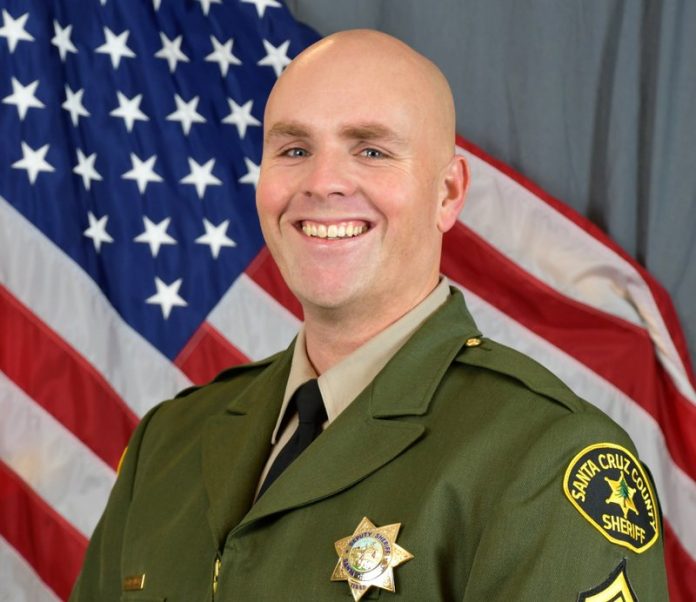(AP) Protesters are pushing to “defund the police” over the death of George Floyd and other black Americans killed by law enforcement. Their chant has become rallying cry — and a stick for President Donald Trump to use on Democrats as he portrays them as soft on crime
But what does “defund the police” mean? It’s not necessarily about gutting police department budgets.
WHAT IS THE ‘DEFUND THE POLICE’ MOVEMENT?
Supporters say it isn’t about eliminating police departments or stripping agencies of all of their money. They say it is time for the country to address systemic problems in policing in America and spend more on what communities across the U.S. need, like housing and education.
State and local governments spent $115 billion on policing in 2017, according to data compiled by the Urban Institute.
“Why can’t we look at how it is that we reorganize our priorities, so people don’t have to be in the streets during a national pandemic?” Black Lives Matter co-founder Alicia Garza asked during an interview on NBC’s Meet the Press.
Activists acknowledge this is a gradual process.
The group MPD150, which says it is “working towards a police-free Minneapolis,” argues that such action would be more about “strategically reallocating resources, funding, and responsibility away from police and toward community-based models of safety, support, and prevention.”
“The people who respond to crises in our community should be the people who are best-equipped to deal with those crises,” the group wrote on its website.
WHAT ARE LAWMAKERS SAYING?
Sen. Cory Booker said he understands the sentiment behind the slogan, but it’s not a slogan he will use.
The New Jersey Democrat told NBC’s “Meet the Press” that he shares a feeling with many protesters that Americans are “over-policed” and that “we are investing in police, which is not solving problems, but making them worse when we should be, in a more compassionate country, in a more loving country.”
Rep. Karen Bass, D-Calif., chairwoman of the Congressional Black Caucus, said part of the movement is really about how money is spent.
“Now, I don’t believe that you should disband police departments,” she said in an interview with CNN. “But I do think that, in cities, in states, we need to look at how we are spending the resources and invest more in our communities.
“Maybe this is an opportunity to re-envision public safety,” she said.
President Donald Trump and his campaign view the emergence of the “Defund the Police” slogan as a spark of opportunity during what has been a trying political moment. Trump’s response to the protests has sparked widespread condemnation. But now his supporters say the new mantra may make voters, who may be otherwise sympathetic to the protesters, recoil from a “radical” idea.
rump seized on the slogan last week as he spoke at an event in Maine.
“They’re saying defund the police,” he said. “Defund. Think of it. When I saw it, I said, ‘What are you talking about?’ ‘We don’t want to have any police,’ they say. You don’t want police?”
Trump’s 2016 campaign was built on a promise of ensuring law and order — often in contrast to protests against his rhetoric that followed him across the country. As he seeks reelection, Trump is preparing to deploy the same argument again — and seems to believe the “defund the police” call has made the campaign applause line all the more real for his supporters.
IS THERE ANY PUSH TO ACTUALLY DEFUND POLICE DEPARTMENTS?
Yes, or at least to reduce their budgets in some major cities.
In New York City, Mayor Bill de Blasio said Sunday that the city would move funding from the NYPD to youth initiatives and social services, while keeping the city safe, but he didn’t give details.
In Los Angeles, Mayor Eric Garcetti vowed to cut as much as $150 million that was part of a planned increase in the police department’s budget.
A Minneapolis city councilmember said in a tweet on Thursday that the city would “dramatically rethink how we approach public safety and emergency response.”
rump seized on the slogan last week as he spoke at an event in Maine.
“They’re saying defund the police,” he said. “Defund. Think of it. When I saw it, I said, ‘What are you talking about?’ ‘We don’t want to have any police,’ they say. You don’t want police?”
Trump’s 2016 campaign was built on a promise of ensuring law and order — often in contrast to protests against his rhetoric that followed him across the country. As he seeks reelection, Trump is preparing to deploy the same argument again — and seems to believe the “defund the police” call has made the campaign applause line all the more real for his supporters.
IS THERE ANY PUSH TO ACTUALLY DEFUND POLICE DEPARTMENTS?
Yes, or at least to reduce their budgets in some major cities.
In New York City, Mayor Bill de Blasio said Sunday that the city would move funding from the NYPD to youth initiatives and social services, while keeping the city safe, but he didn’t give details.
In Los Angeles, Mayor Eric Garcetti vowed to cut as much as $150 million that was part of a planned increase in the police department’s budget.
A Minneapolis city councilmember said in a tweet on Thursday that the city would “dramatically rethink how we approach public safety and emergency response.”
“At this time, with violent crime increasing, a global pandemic and nearly a week’s worth of violence, arson, and looting, ‘defunding’ the LAPD is the most irresponsible thing anyone can propose.”

















